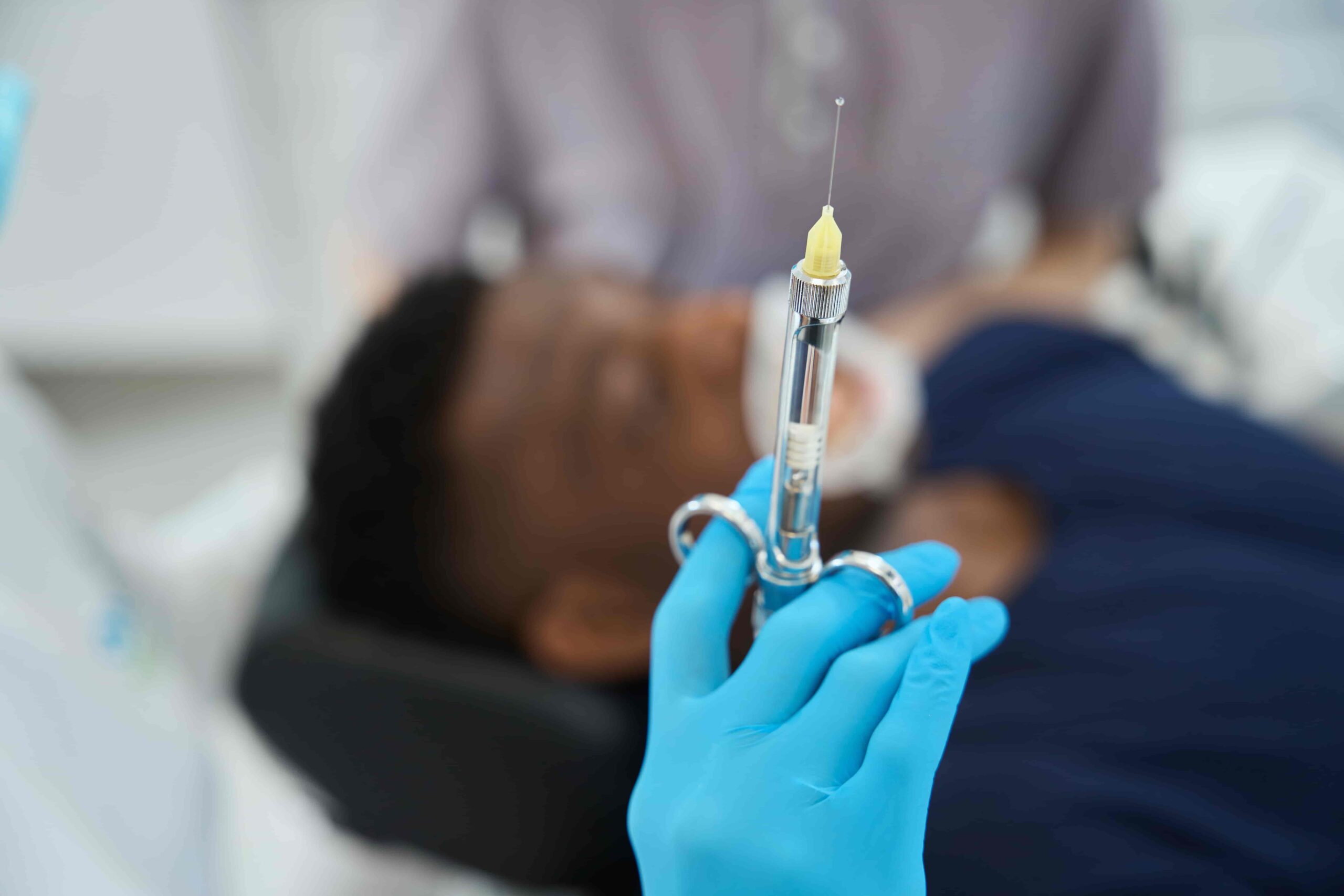At Pecan Tree Family Dentistry, your comfort is always a top priority. Whether you’re receiving a filling, an extraction, or oral surgery, we use safe and effective anesthetics to ensure your experience is pain-free and stress-free.
💉 What Is a Local Dental Anesthetic?
A local anesthetic is a medication that temporarily numbs a specific area of your mouth. It works by blocking nerve signals in the targeted region, preventing pain messages from reaching your brain during a procedure.
You’ll remain fully awake and alert, but you won’t feel pain in the treated area—only light pressure or movement.
🦷 Commonly Used Dental Anesthetics
Here are the most widely used local anesthetics in dentistry—and why we choose them:
✅ 1. Lidocaine (Xylocaine)
- Most common anesthetic in general dental care
- Fast onset: begins working in 2–3 minutes
- Duration: 1.5 to 2 hours
- Often combined with epinephrine to extend numbing and control bleeding
✅ 2. Articaine (Septocaine)
- Known for deep penetration and fast onset
- Great for lower molars and areas needing strong diffusion
- Duration: 1–2.5 hours
- Commonly paired with epinephrine for longer effect
✅ 3. Mepivacaine (Carbocaine)
- Shorter acting—ideal for shorter procedures
- Often used without epinephrine, making it suitable for:
- Patients with heart conditions
- Those with epinephrine sensitivity
- Duration: 20–40 minutes (without epinephrine)
✅ 4. Prilocaine (Citanest)
- Milder vasodilation effect than lidocaine
- Sometimes used with lower concentrations of epinephrine
- Common in combination treatments
- Suitable for patients sensitive to stronger vasoconstrictors
✅ 5. Bupivacaine (Marcaine)
- Long-acting anesthetic—up to 6–8 hours of relief
- Typically used for:
- Oral surgeries
- Procedures with extended recovery time
- Provides post-operative comfort when needed most
⚡ What’s the Role of Epinephrine in Dental Numbing?
Many anesthetics include a small amount of epinephrine (adrenaline) to:
- Prolong the numbness
- Minimize bleeding in the treatment area
- Keep the anesthetic localized for safety and effectiveness
For patients with health conditions, anxiety, or sensitivities, we offer epinephrine-free options tailored to your needs.
🔗 Related Reading: What Is Epinephrine in Dental Anesthetics?
🏡 Personalized Anesthesia for Every Patient
We understand that no two patients are alike. That’s why we choose the anesthetic that best matches:
- Your procedure type
- Your medical history
- Your comfort level
Our team will explain exactly what to expect—and we’re always happy to answer questions.
📞 Need Dental Treatment? Let’s Make It Comfortable
From routine fillings to complex procedures, your experience at Pecan Tree Family Dentistry will be safe, gentle, and transparent.
📍 Based in McKinney, TX?
📞 Call us at (972) 562-0767 or book your visit online



